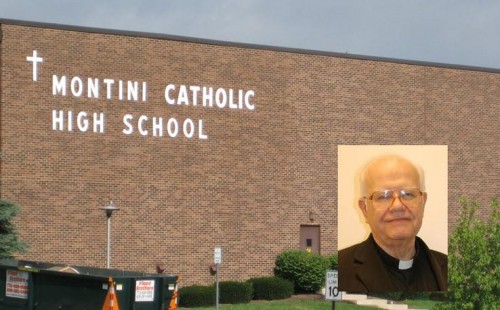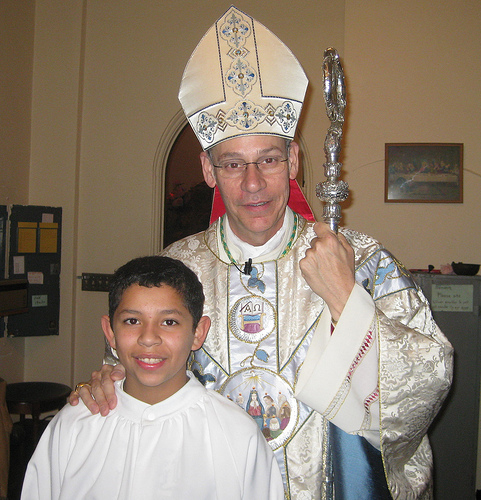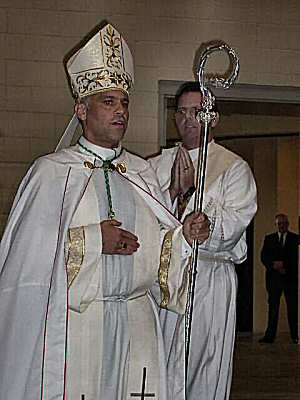An Iowa woman contemplating a return to the Roman Catholic Church last year agreed to meet with a priest on one condition — he remove his collar.
“Roman collars still frighten me,” Kathleen Bowman, 47, told the priest.
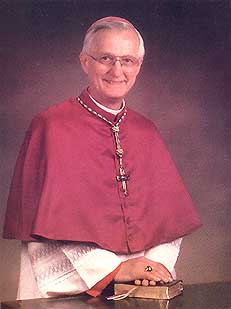 She then emerged from four decades of silence, having only ever shared with a therapist her story of alleged abuse as a child by three priests because the memories were making her suicidal.
She then emerged from four decades of silence, having only ever shared with a therapist her story of alleged abuse as a child by three priests because the memories were making her suicidal.
“I didn’t know I could report,” Bowman told the Quad-City Times, her first time speaking publicly about the alleged abuse. “It was taking everything just to maintain life.”
The Clear Lake, Iowa, woman first told a Mason City parish priest in the Archdiocese of Dubuque in August 2011, and he encouraged her to report her story. That brought her before a review board with the Diocese of Davenport, where her three alleged abusers had been clerics around the time she says she was abused.
How the Davenport diocese handled her case was the subject of a judge’s decision last week in U.S. Bankruptcy Court. The diocese recently emerged from bankruptcy after a $37 million settlement covering 150 child sex abuse victims.
U.S. District Judge Lee Jackwig ordered the diocese to add the now-deceased Revs. John Bonn, Michael Broderick and William Dawson to its online list of credibly accused priests, according to a filing late Tuesday.
Bowman petitioned the court last month to require the diocese to put Bonn, Broderick and Dawson on the list. The diocese resisted, saying it had reviewed Bowman’s case and found her accusations not credible, although she received a settlement after an arbitrator heard her case earlier in the year.
“If they think throwing money at you compensates having your childhood ripped away, it doesn’t,” Bowman said. “I want the names on that list, so that if someone else comes forward, they don’t have to go through what I went through reporting my abuse.”
One of the bankruptcy settlement’s non-monetary requirements is that the diocese identify on its website priests whom it deems to be credibly accused of committing child sexual abuse. The list includes 31 former priests, their places of employment, dates and other details.
As of Friday, Bonn, Broderick and Dawson weren’t on the list.
Diocese weighs response
Diocese spokesman Deacon David Montgomery said the diocese received the court’s written order Thursday morning and is “exploring its options,” declining further comment about Bowman’s case.
A lawyer representing the diocese, Rand Wonio of the Davenport law firm Lane & Waterman, said the diocese is studying the judge’s order and will respond soon.
Bowman said she was 4 years old when a tall, white-haired man wearing a priest’s collar reached down and picked her up and carried her upstairs in her family’s home in Waterloo, Iowa. When she woke up from a nap, the priest was lying beside her, fondling her, she said.
The incident occurred in 1969, and Bowman has identified the man as John Bonn. She said she was abused again by Bonn as well as by Broderick and Dawson in separate incidents over the course of five years. She said her parents knew.
The three priests made multiple weekend trips together to her home, she said.
“They were family. They were my dad’s best friends.”
She said her father, Michael Huston, who once considered the priesthood, went to high school with Dawson at Catholic Central in Ottumwa, Iowa.
An obituary shows that Dawson co-officiated Huston’s funeral in 1997.
Fellow priest skeptical
The Rev. John Hynes, a retired Davenport diocese parish priest, said Friday that he knew Dawson for more than 60 years, since they were students in college, and affectionately called him “Digger.”
Hynes said he was “devastated” by the allegation against Dawson.
“Every instinct I have within me tells me it couldn’t have happened,” Hynes said.
He said Dawson was admired as a professor at St. Ambrose University in Davenport and was recognized for leading peaceful demonstrations during the Vietnam War. He received multiple awards for his teaching and has long been regarded for his work in social justice, Hynes said.
Hynes doesn’t remember an accusation ever being made against Dawson before this.
“Anyone who knew Digger well would have a hard time thinking he could be involved in such a thing,” Hynes said.
Hynes confirmed that Dawson and Huston were friends. Hynes said he personally knew Huston’s parents when he spent his first 10 years as a priest in Ottumwa, where Huston grew up.
“I knew of Michael Huston. He was a friend of Digger’s,” Hynes said. “I knew his parents.”
Dawson once visited Huston at a hospital after Huston was in a car accident, Hynes said.
Hynes also confirmed that Dawson and Broderick traveled together and were close friends. He said Broderick was a parish priest in Ottumwa while Dawson was a student, and “Broderick thought the world of Digger.”
He said he doesn’t recall Bonn ever joining Broderick and Dawson on their trips but said it is possible the three were acquainted. According to Hynes, Bonn served at the Ottumwa Naval Air Station during World War II around the same time Broderick and Dawson were in Ottumwa.
Bonn, a Jesuit priest from the New England Province of the Society of Jesus, relocated to the Davenport diocese in 1969, according to New England Province spokeswoman Alice Poltorick.
Poltorick said the Davenport diocese notified the province about the allegation in late 2011. The province has not received any other allegations against Bonn, she said.
Bonn was a professor at Boston College from 1937-43, when he joined the service as a World War II naval chaplain, Poltorick said. He returned to Boston College and was a member of the faculty until 1946, she said.
Bonn applied for and was given a faculty position at Marycrest College in Davenport in 1969, Poltorick said.
Bonn died in 1975; Broderick died in 1984.
Accuser denied meeting
Bowman brought her allegations to the Davenport diocese in September 2011, while Dawson still was alive. She repeatedly requested a meeting with Dawson and was refused, she said. He died Dec. 13, 2011, and she said she never received a written apology from him.
“With or without their blessing, I’m credible,” Bowman said. “I need them to do the right thing and name those priests.”
Complete Article HERE!
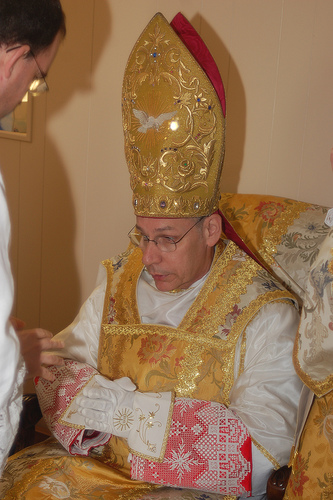 A Jackson County judge found Bishop Robert Finn guilty on Thursday on one count of failing to report suspected child abuse. He was found not guilty on the other count. The state asked the judge to put Finn on probation, according to court reports.
A Jackson County judge found Bishop Robert Finn guilty on Thursday on one count of failing to report suspected child abuse. He was found not guilty on the other count. The state asked the judge to put Finn on probation, according to court reports.
